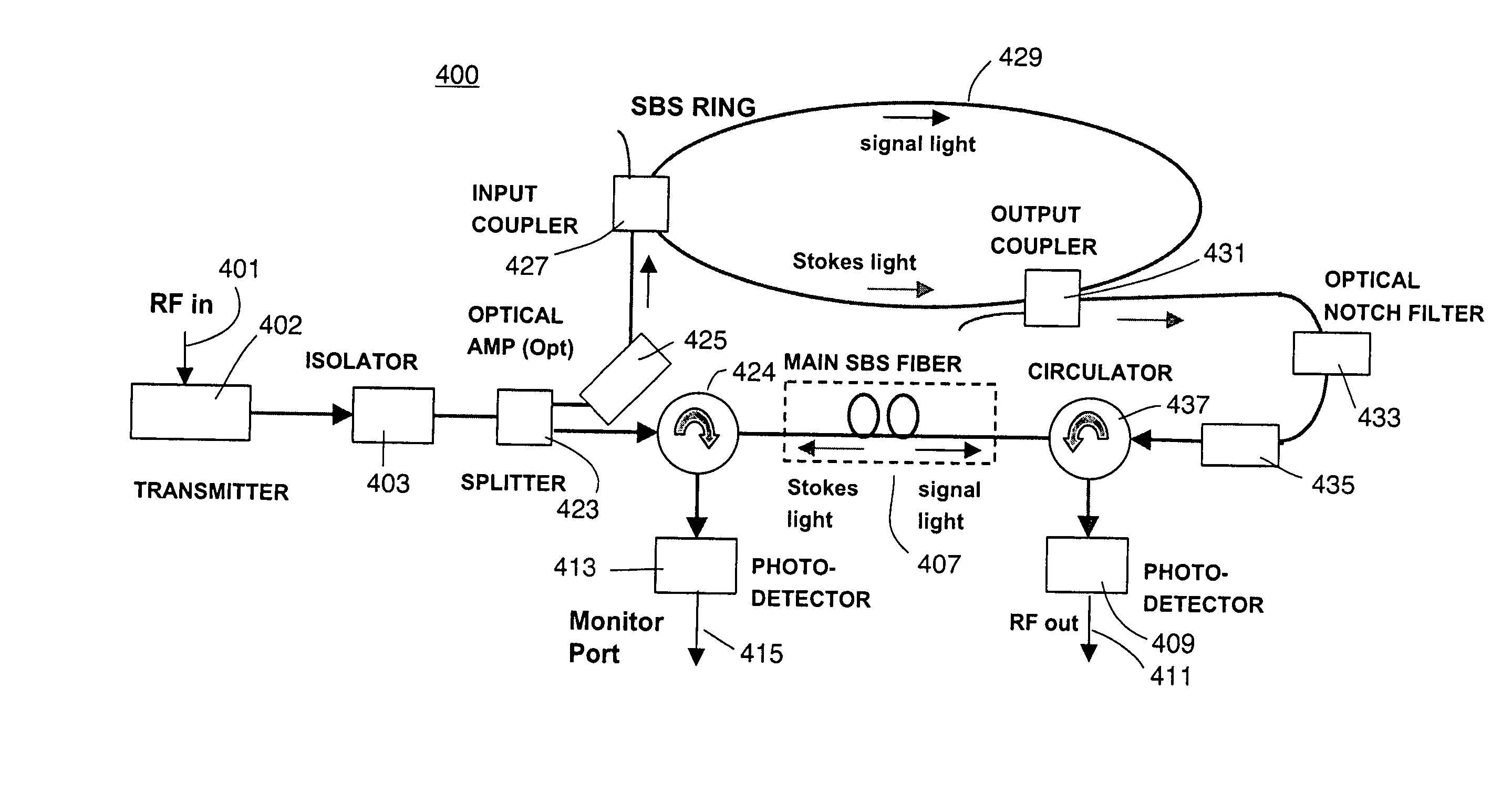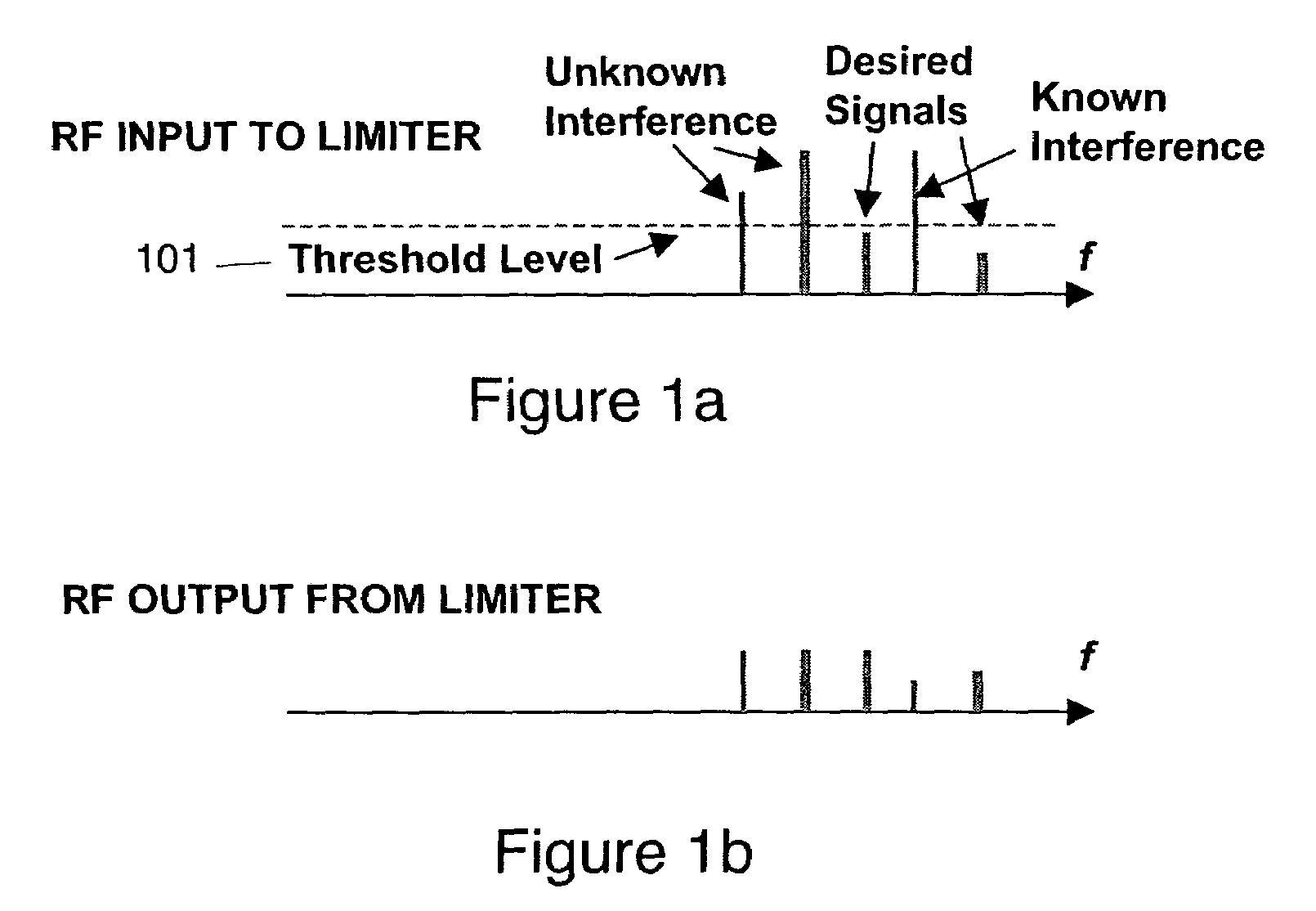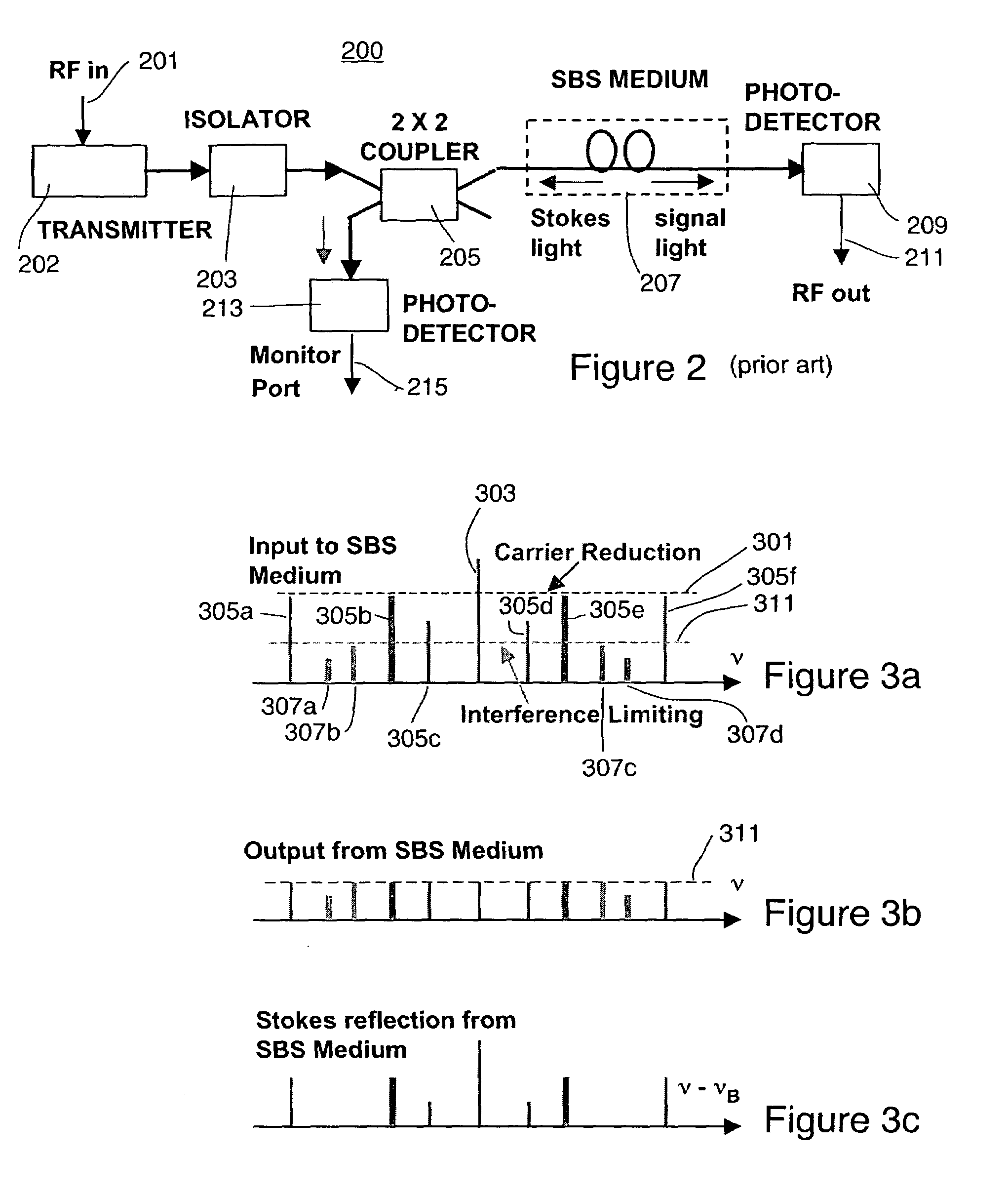Self-adapting limiter
a limiter and self-adaptive technology, applied in the field of sbs, can solve the problems of affecting the signal reception of the other antenna, affecting the signal of the commercial receiver located near the high-power transmitter such as television or radio stations, and the amplifiers in the receiver, so as to improve the system's signal-to-noise ratio, reduce the amount of optical power required, and shorten the length of the sbs medium 207
- Summary
- Abstract
- Description
- Claims
- Application Information
AI Technical Summary
Benefits of technology
Problems solved by technology
Method used
Image
Examples
Embodiment Construction
[0035]The limiter system and method disclosed may suppress, in a self-adaptive manner, much of the unwanted RF interference without needing a priori knowledge of the frequencies of those interfering signals. This approach makes beneficial use of Simulated Brillouin Scattering (SBS) in optical fibers to reduce the power of the undesired signals. The effect of SBS is essentially to limit the output power at all frequencies such that the output power at all frequencies falls below a given threshold level 101, as illustrated in FIGS. 1a and 1b. The spontaneous-gain bandwidth for Brillouin scattering is approximately 50–100 MHz. One skilled in the art will appreciate this gain bandwidth determines the frequency resolution of the system and method disclosed herein. Thus, any interfering signal that is spaced more than 50 MHz away from the desired signal can be reduced without also reducing the intensity of the desired signal. The threshold level for SBS depends on the length of the optica...
PUM
 Login to View More
Login to View More Abstract
Description
Claims
Application Information
 Login to View More
Login to View More - R&D
- Intellectual Property
- Life Sciences
- Materials
- Tech Scout
- Unparalleled Data Quality
- Higher Quality Content
- 60% Fewer Hallucinations
Browse by: Latest US Patents, China's latest patents, Technical Efficacy Thesaurus, Application Domain, Technology Topic, Popular Technical Reports.
© 2025 PatSnap. All rights reserved.Legal|Privacy policy|Modern Slavery Act Transparency Statement|Sitemap|About US| Contact US: help@patsnap.com



